As a new graduate, who just recently moved out of her parent’s house, I’ve only started digging into gardening as a hobby. Last summer, I tried my hand at some flower planters that you can read about here. This post will be all about my first and possibly disastrous attempt at planting spring bulbs, what I’ve learned and what I’ll try next time!

Admiring some beautiful gardens in Vietnam
If you’re like me, the site of colourful spring flowers brings excitement and a feeling of good things to come after a bleak winter. My mum always planted spring bulbs at my family home, so when I moved out, I couldn’t wait to embrace this tradition. However, I knew almost nothing about spring bulbs…
While out shopping last fall, I became a little overzealous and bought about 120 bulbs from Costco, for the two small gardens where I live. Then, I naturally got busy and totally forgot to plant them until the last week of October- which was a little later than the recommended 6 weeks before the first ground-freezing frost. So I’m just hoping that my bulbs decide to come up!
As I nervously await the hopeful arrival of my spring flowers, I’ve committed to do some research for myself and anyone else interested!
As I mentioned before, I might have jumped the gun and bought a ton of bulbs from Costco before researching the different varieties, local growing conditions, or even how to plant them. I stereo-typically bought bags of bulbs with the prettiest pictures on the front. Evidently, experienced gardeners suggest buying bulbs from reputable nurseries (I’m guessing where I buy my bulk quantities of meat and hot sauce isn’t considered reputable). It’s recommended to buy from nurseries vs. big box stores since the staff at local nurseries tend to be much more knowledgeable about the plants, local growing conditions, and generally take better care of the plants.
In other findings, I’ve learned there are many different types of spring bulbs that require different care and bloom in the early, mid or late spring. If you desire an elaborate spring garden, you could even plant a variety of bulbs that will continuously flower all spring. Here is what else I’ve learned!
Early Spring Bloomers: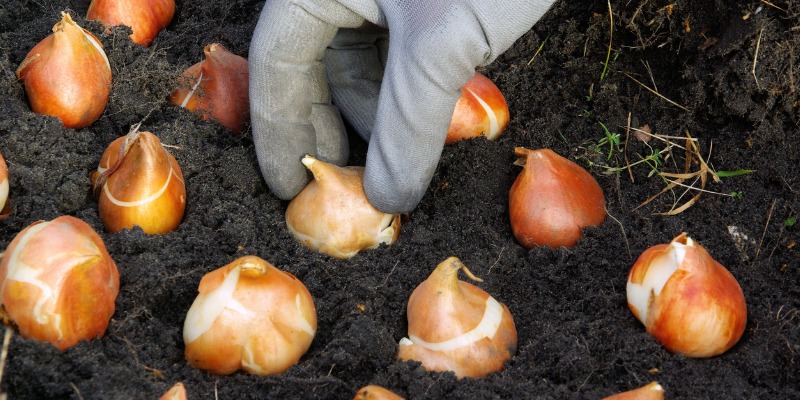
Winter Aconite, Snowdrops, Fragrant Puschkinia, Glory of the Snow, Tiny Reticulata
Early-Mid Spring:

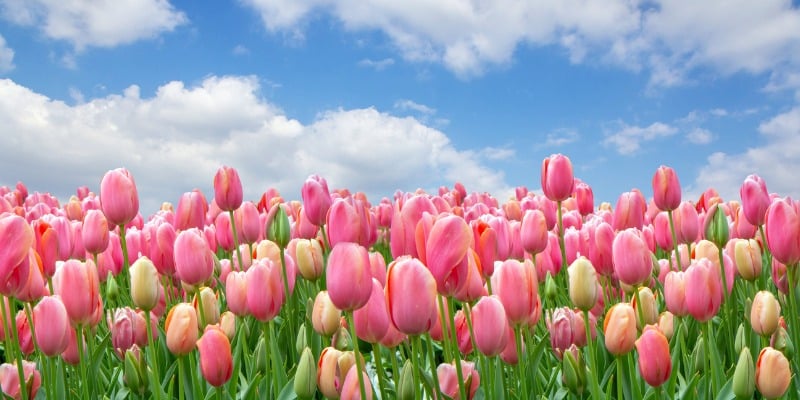
Tulips and Daffodils
Late Spring:
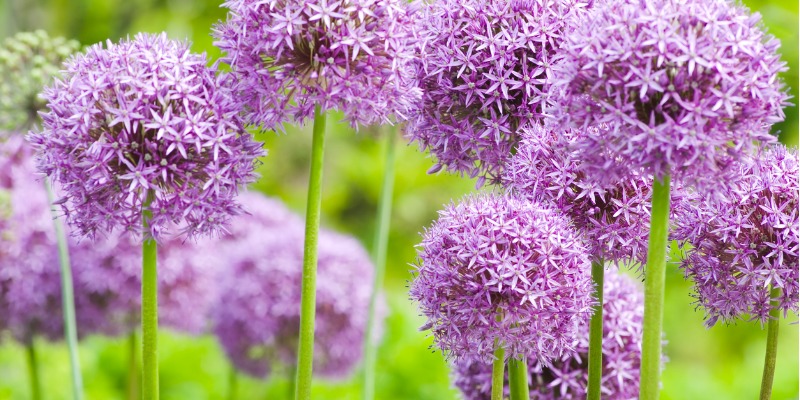
Allium

Spring bulbs should be planted in well-drained soil about 6 weeks before the hard, ground-freezing frost. This will allow the bulbs to establish a root system; if the ground is too wet there is a chance the bulbs will rot.
On the back of the bulb packaging it will usually indicate proper depth and spacing for the specific bulbs. I purchased a “Perfect Pairings” set with Crocus and Daffodils, as well as a package of “Curb Appeal” Tulips. On the back of the package it had exact depths and spacing for each type of bulb, and being the nerd I am, I used a ruler for the first couple of bulbs I planted and would definitely recommend it for any beginner.
When planting bulbs, my research indicates that they should be planted in clusters and never in rows, as it will increase the instability of the flowers and they may fall over. I didn’t know this and planted all 120 bulbs in neat, single file rows- so I may end up with a garden of horizontal flowers…
Once the bulbs are planted, it is recommended to fertilize the soil in the planting area with bulb booster, bone meal, or super phosphate.
Squirrels may love your bulbs more than you, and they’ve been known to remove carefully arranged groups or even to re-arrange your bulbs! Tamping down the soil after planting helps to protect your hard work by concealing the smell of the bulbs. To protect your bulbs from marauding animals, try sprinkling blood meal or critter-ridder over the bulbs before covering with soil. If you’re really protective of your bulbs, some gardeners cover the bulbs, once in the hole, with chicken wire to ward off pesky critters.
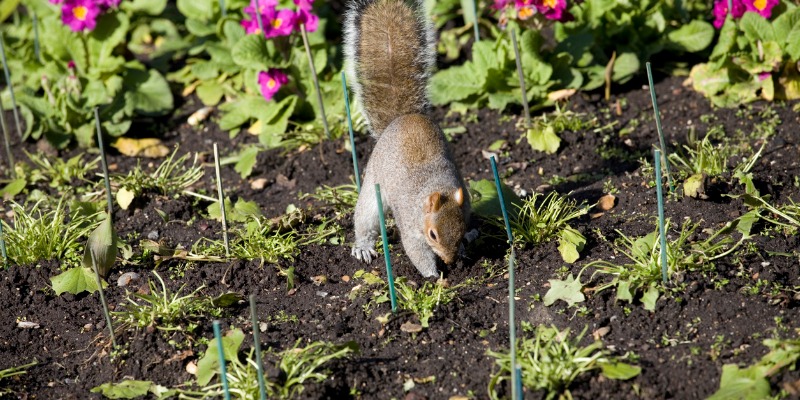
Good news, spring bulbs are mostly maintenance free! After the bulbs have bloomed you may want to dead head them, but leave the stems and leaves standing. The foliage needs to die back naturally, allowing the sun to convert oxygen, nitrogen, phosphorus, and potassium into food that is stored in the bulb for next year. Spring bulbs should flourish and come back for years to come if they are planted in well-drained soil, allowed plenty of sunlight, and you’re able to stave off hungry squirrels!
Sometimes bulbs don’t come up at all, or they might come up but won’t blossom. Here are some common reasons why:
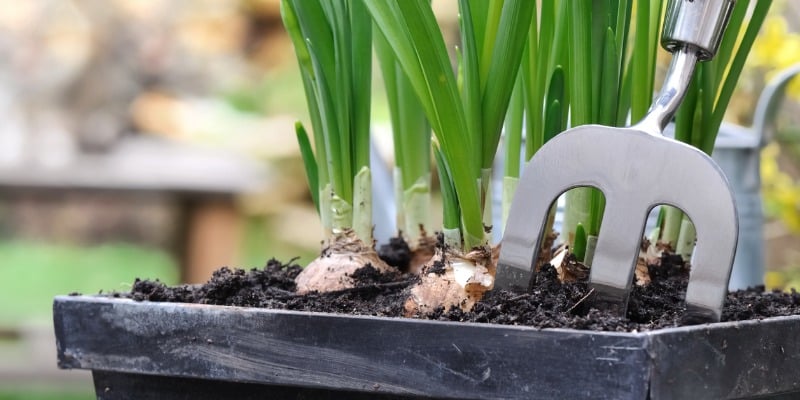
So, now that I can pinpoint everything I did wrong while planting my own spring bulbs, hopefully I’ve educated and inspired you to try your own hand at it!
While I sit back and await my spring blooms, I’ve started to think forward to next fall. I think I’ll try my luck with a layered bulb container (pictured above), or maybe even try to bring some spring colour inside during the winter months, by forcing bulbs in a vase (pictured below).
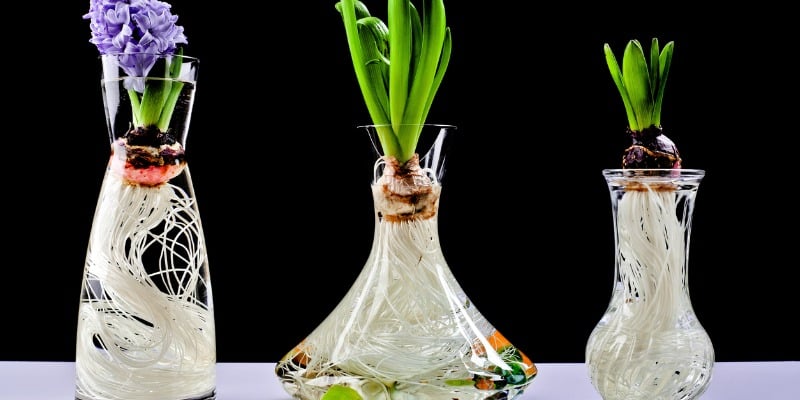

– Jenna Monk